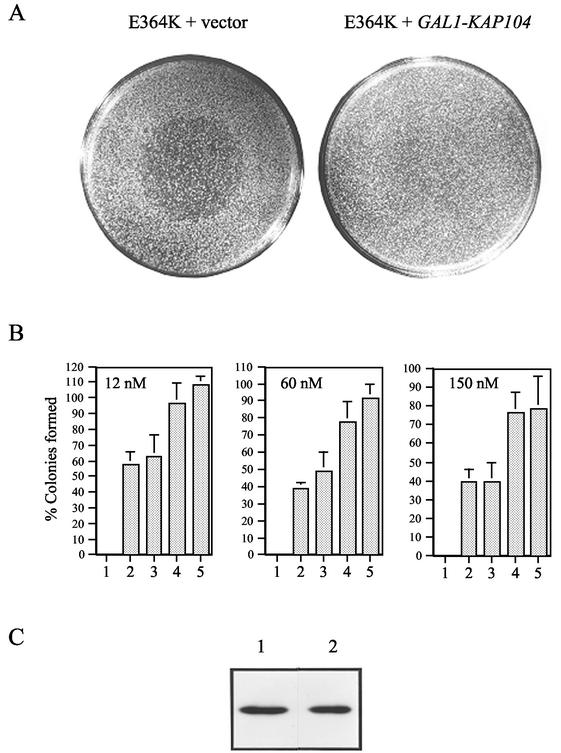FIG. 6.
Overexpression of Kap104 potentiates Gpa1-mediated adaptation. Strain 15Dau was transformed with the vectors indicated below and the transformants were tested for their ability to grow in a range of pheromone concentrations. The transformants were cultured and assayed in galactose medium. (A) Halo tests: YCplac111/Gpa1E364K and pYES (left); YCplac111/Gpa1E364K, and pYES/KAP104 (right). (B) Single-colony formation assays. The ability to form colonies on medium containing discrete concentrations of α-factor was assayed. The numbers plotted are the percentages of cells of a given strain that formed colonies at the indicated dose. Each datum point is the mean of at least two trials with each of at least six transformants. Plasmids pYES/KAP104-A and pYES/KAP104-B were constructed by using DNA derived from two independent PCR amplifications of the KAP104 coding region. Columns: 1, pYES; 2, YCplac111/Gpa1E364K; 3, pYES and YCplac111/Gpa1E364K; 4, pYES/KAP104-A and YCplac111/Gpa1E364K; 5, pYES/KAP104-B and YCplac111/Gpa1E364. (C) Immunoblot probed with Gpa1 antibody. Protein was extracted from strain 15Dau transformed with YCplac111/Gpa1E364K (left) and with pYES/KAP104 and YCplac111/Gpa1E364K (right).

